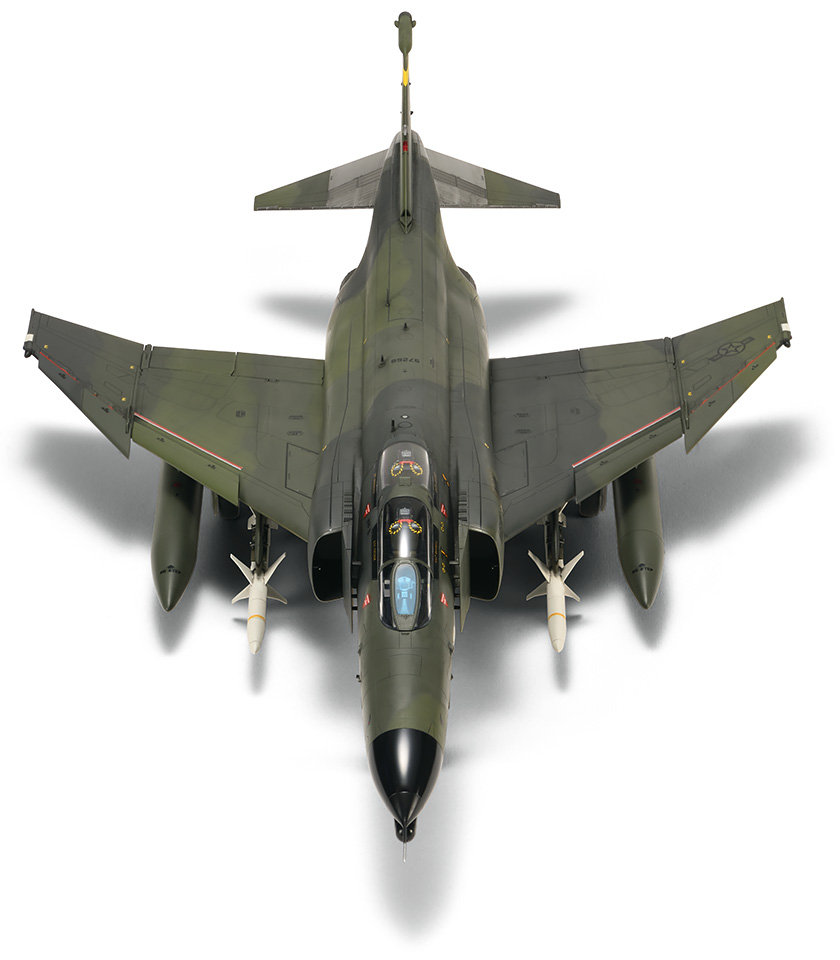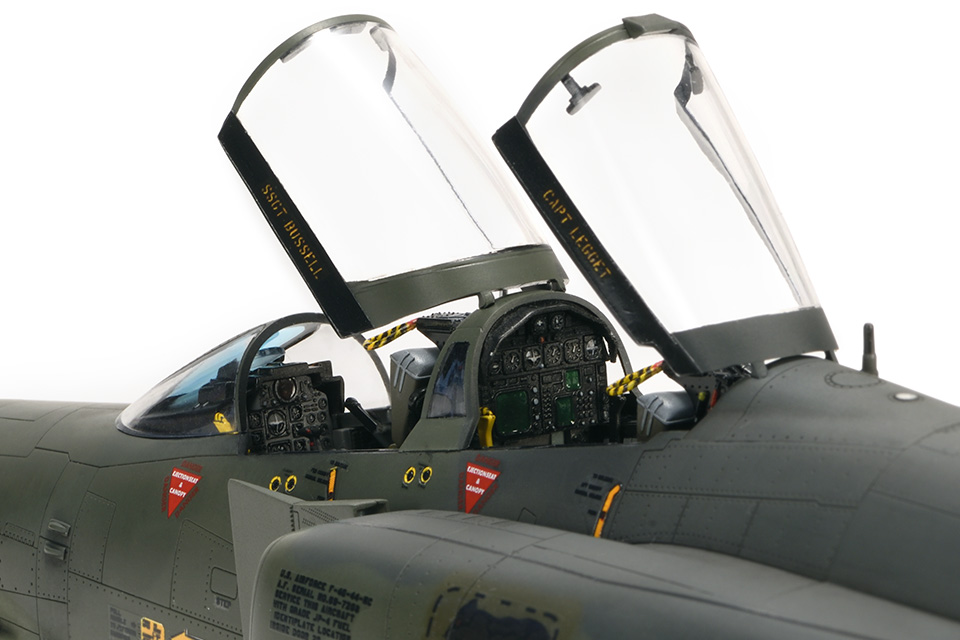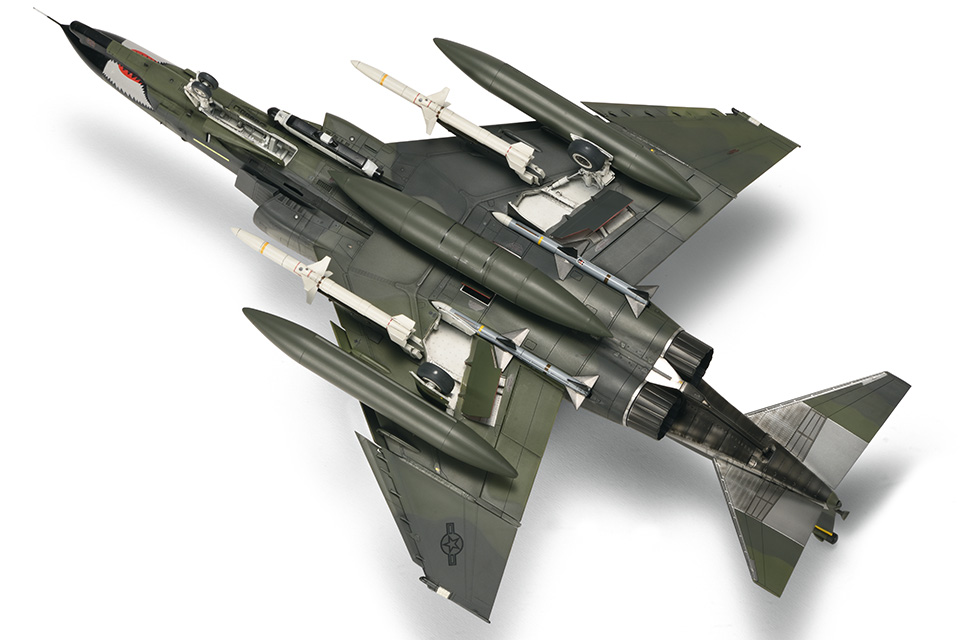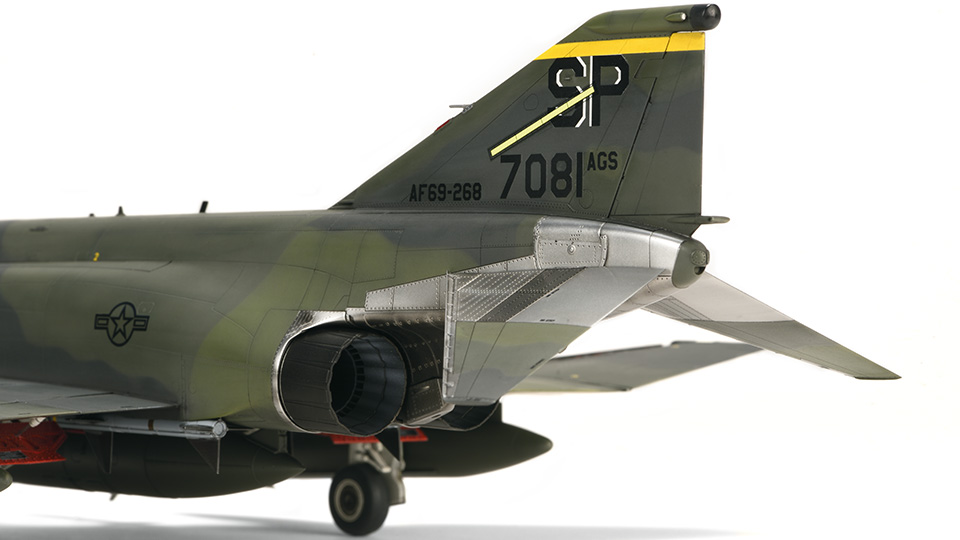F-4G Phantom II Wild Weasel V
The F-4G is a SEAD (Enemy Air Defense Network Suppression) mission-only aircraft that has been modified from the F-4E as a successor to the F-105G. Various sensors such as AN / APR-38 are used to search for the radar wave and its position emitted from the tracking / guidance radar of the enemy SAM (surface-to-air missile) site or the radar site, and AGM-45, AGM-78, AGM-88. Its main mission is to attack with anti-radar missiles such as, and it is commonly called "Wild Weasel" in the eyes of Itachi crawling on the ground in search of prey.
The F-4G, which is said to be the most successful Wild Weasel aircraft, has been thoroughly reproduced with its accurate appearance and details. You can fully enjoy each type comparison while assembling.
The three major points of F-4G Wild Weasel VWe selected F-4E early /late , F-4EJ / EJ Kai, F-4F/ F ICE, F-4G, the seven versions in total among the long-nose type F-4 series as the SWS line-up, replicate the "F-4G," which is said to be the most successful Wild Weasel, with its accurate external shape and details. You can compare the differences between each version by building them.The “Wild Weasel” SEAD (Suppression of Enemy Air Defense) aircraft is finally released. Its primary mission is to track and detect radio signals transmitted by enemy radar to their source so that they can destroy enemy air defense facilities. In other words, they are taking on the risky role of directing the attention of the targeted enemy air defense network to themselves. You can imagine the heroic scene of F-4G!F-4G, 52nd TFW, 81st TFS, Sr.no.69-7268 Spangdahlem AB, Germany July 1987
F-4G belonging to the 52nd Tactical Combat Wing, 81st Tactical Combat Squadron, stationed at Spangdahlem Air Base, former West Germany, Sr. no. 69-7268, with 1987 markings. This aircraft was designated as the squadron leader of the 81st Tactical Combat Wing during the summer of 1987. The distinctive Black Panther marking on the side of the left intake is the mascot of the 81st Tactical Combat Squadron. Note the European One camouflage, painted entirely in three colors, including the underside of the fuselage!
Explanation of each part
Cockpit
About the F-4G's flight control system for dangerous enemy air defense network suppression missions.
In the F-4E/G models, the FCS (Fire Control System) was replaced by the AN/APQ-120, which was smaller and more vibration-resistant. The control system, which was only available for the front seat in the naval type, was added to the rear seat so that the WSO (Weapons Systems Officer) could also pilot the aircraft, similar to the C/D type. The dual-pilot system not only increased the aircraft's survivability, but also brought operational advantages such as eliminating the need for a new training aircraft. The SWS kit replicates in detail even the shape of the hood covering the top of the instrument panel for the aft seat, which was unique to the G type. Even the hood covering the upper part of the instrument panel, which is unique to the G type, is reproduced in detail. Even the rear-view mirror installed to avoid the hood is replicated in great detail. It is an interesting experience to think about the emotions of the soldiers who risked their own lives for SEAD missions.
Weapons
The unique armament of the Wild Weasel that was required for the mission to suppress the enemy's air defense network.
For the F-4G, one M61A1 20mm Vulcan cannon on the underside of the nose, which had been a feature of the long nose type, is removed, and receivers are stored in the antenna fairing newly installed as Wild Weasels. It is equipped with many antennas of various sizes in various parts of the fuselage to alert, supplement, and analyze enemy radar waves. In terms of armament, up to four AIM-7E missiles can be mounted in the missile bay under the fuselage, but normally two are mounted in the Sta. 3/7 at the rear. Sta. 4 on the left side under the nose carries ECM pods such as AN/ALQ-119 and AN/ALQ-131. Two AGM-88s (up to four) and four AIM-9s can be mounted on the underwing pylons, but there are few examples of F-4G carrying them.
Engine
Note the detailed replication of the masterpiece engine, down to the differences between each model.
The F-4 was basically equipped with only one type of engine, the General Electric J79. The J79-GE-15 with a short nozzle (maximum thrust 7,710 kg) on the base model C/D was replaced by the J79-GE-17 with a long nozzle (maximum thrust 8,120 kg) on the G model, the same as the E model, and both can be started by gunpowder cartridges. In the SWS kit, the nose cone and guide vanes at the tip of the engine are separate parts. The kit replicates the nose cone and guide vanes as separate parts, and even the support fins, which are characteristic of the -15/-17, are replicated in detail. The nozzle section has been newly divided into two parts to replicate its depth and feel, and both open and closed parts can be included for selection. Note the new shell-shaped fairing on the tip of the vertical tail wing to mount the AN/APR-38/-47 rear warning antenna.
By Zoukei-Mura
























